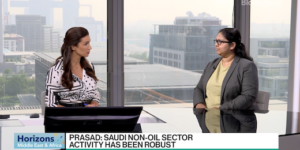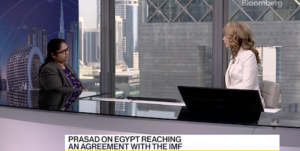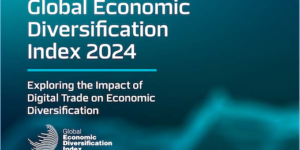While advanced economies of the world are trying to return to a sustainable path in the aftermath of the global financial crisis, magnified by fiscal and debt uncertainties in the Eurozone area, the GCC countries, and the UAE in particular, have recovered. Their growth is buoyed by higher crude oil prices, stimulatory government spending, and growing links with emerging economies, predominantly from Asia. During 2011, despite the upheavals associated with the Arab Spring, oil producers renewed their record levels of export earnings and international reserves, allowing for expansionary fiscal policy that boosted economic activity and led to an acceleration of economic growth, at least in the short term.
During 2011 the DIFC has benefitted from the economic activity revival in the UAE and the region as a whole, as evidenced by the findings in DIFC Economic Note 20 titled “DIFC Economic Activity Survey 2011”, and strengthened its position as a growing financial hub of the region.
This report is based on the survey responses from 533 DIFC entities (8.6% higher than the number of entities that participated in the survey in the previous year – 479) that represent 65.2% of the DIFC’s 817 companies that were active during 2011. The response ratio for the current survey slightly improved from the 63.5% response rate in 2010.
The growth in number of establishments at the DIFC in 2011 was driven entirely by the non-bank Business sector, while the number of companies in the Financial sector remained stable. At the same time we note that a growing number of firms are joining the DIFC from the emerging market economies.
We estimate that total value added (the equivalent of GDP) of the DIFC reached USD 3.13bn in 2011 with an acceleration of the growth rate to 7% from 5.5% in the previous year.
The performance of economic sectors and activities of the DIFC entities at current prices in 2011 can be broken down as follows: Financial intermediation sector recorded a value added of USD 2.2bn, while its contribution to the total value added of the DIFC was 70.3%. The balance of29.7%, amounting to USD 0.9bn, was generated by Business sector entities (e.g. accounting and audit services, management consultants, law firms, restaurants, retailers, and other service providers) and the public sector.
While the contribution of companies to the value added of DIFC can be estimated as above, the indirect contribution of the DIFC to the economies of Dubai and the UAE cannot be so accurately accounted for. As residents in the Emirate, the DIFC workforce contribute to the economy as consumers who invest, rent housing, travel, shop, eat, have relatives visit from abroad (who also shop, eat, travel within the UAE), consult doctors, drive cars, buy real estate all causing an increase in demand for key goods and services in the Emirate – leading to what is called a multiplier effect. This value is more difficult to estimate, but given that the average DIFC workforce compensation falls in the higher end, it is a safe assumption to make that the stimulus to the economy from their spending is substantial.
The questionnaire for the current survey, which is based on the UN-OECD principles and methodology for compiling national income statistics, was expanded to include new sections to capture additional workforce characteristics, paid-up capital, assets and liabilities, and the geographical origin of DIFC entities’ ultimate controlling parents. The new data show that aggregate paid-up capital of DIFC entities owned by non-UAE residents is about 2 times higher than that owned by UAE residents (based on the actual data from responding companies), and that more than half of all ultimate controlling parents of the responding DIFC companies originate from only 4 countries, with the UAE leading the list, while the total number of countries in the list exceeds 50. Also, the new data shed some light on the hierarchical structure of the DIFC labour force, revealing that in the financial sector companies, in contrast to the entities involved in business activities, the proportion of executive officers and managers in the total workforce is notably higher.
A large proportion (55.6%) of the total DIFC’s labour force, estimated at 12,945 people as of end of 2011, was employed in the finance and banking sector. Business sector and public administration entities provided jobs to 41.7% and 2.7% of the total DIFC labour force, respectively. UAE nationals, accounting for only 2.2% of the total DIFC labour force, were mostly represented in the public administration sector (around 1/3 of all people employed by the DIFC and DFSA, on a consolidated basis), while their share in the labour force of private companies was minor at 1.4%.
DIFC human capital is of high quality, with 87.6% of all employees holding university level and post-graduate degrees. Educational attainment features are similar among male and female populations. About 85% of both men and women are university graduates and above, underscoring the availability of an equally highly skilled workforce at the Centre.
The data were collected through the interactive secure web-based online portal DIFCSTAT, which manages all official and administrative communications between the DIFC Authority and licensed companies (https://www.difcstat.ae/difcstatonline/default.aspx).
Click Economic Note 20 – EAS 2011 to download the full report.






